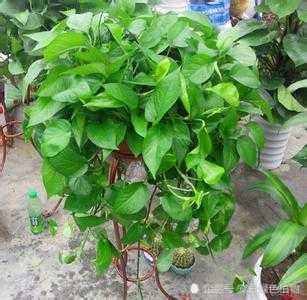There is a cat's attention at home: these eight kinds of flowers and plants cannot be raised.

Cats like to nibble on flowers and plants, especially plants with slender, flexible stems and leaves (like funny cat sticks) and chewy plants (like rubber tail rats). Some cats even pick flowers out of the soil to see what their roots look like.
Many plants, including indoor plants and courtyard plants, are harmful or even toxic to cats and should never be touched by cats. Surprisingly, there are several families in which all plants are toxic to cats, and some plants that can be used as medicine are even poisonous to the whole plant.
Among them, the more toxic ones are: Castor bean, cooked land, lily of the valley, Japanese yew, oleander, rhododendron, hydrangea (eight immortals). A single castor bean can poison a cat alive, and mistletoe is deadly.
Liliaceae plants are not usually included in the list of common poisonous plants, but lily plants can make cats very sick. Some veterinarians and toxicologists believe that Liliaceae plants are a major cause of acute renal failure in cats.
Flowers and plants such as morning glory, daffodils, irises, hyacinth and honeysuckle are also poisonous to cats. Christmas trees (such as fir, spruce), pine needles, and even the water around the bottom of the Christmas tree can make the cat's mouth inflamed, vomiting, diarrhea, drowsiness, shivering and weak hind legs. Poinsettia is not very toxic, but it can cause gastrointestinal irritation and vomiting.
Next, let's get to know some common flowers that are toxic to cats.
1. Lily
It is often kept in vases as fresh cut flowers, but lilies are actually nephrotoxic plants that can cause severe kidney damage (such as tubular necrosis) when bitten by cats. If you are treated within 6 hours, you can usually recover, but if you delay, you can easily die of kidney failure.
2. Rhododendron
Toxicity can seriously affect the central nervous system, causing nausea, vomiting and diarrhea, decreased blood pressure, shortness of breath and, in severe cases, cardiovascular collapse, coma and death.
3. Christmas red
Juice has a strong irritation on the cat's lips and eyes, if the cat bites the stem or leaves, stamens, vomiting, diarrhea and other symptoms will occur.
4. Narcissus
The whole plant of Narcissus is toxic, which is mainly concentrated in the bulb. There are daffodils and daffodils in white mucus, as well as in the sap of flowers and leaves. Daffodils have gastrointestinal irritation to cats, which can cause vomiting, diarrhea, fever, abdominal pain, lethargy and other symptoms, as well as arrhythmia, which in severe cases can lead to spasm, paralysis and death.
5. Cyclamen
Toxicity is mainly concentrated in the root, accidental eating will not only cause cat mouth and lip skin allergy, but also stimulate the intestinal tract, resulting in severe vomiting, serious death.
6. Tulips
Tulips contain a small amount of toxic alkaloids (such as colchicine), which are concentrated in the bulb and cause gastrointestinal irritation to cats, causing vomiting, diarrhea, fever, abdominal pain, lethargy, arrhythmia and other symptoms. If the cat digs the tulips out of the flowerpot and gnaws at its roots, it is easy to be poisoned.
7. Dishui Guanyin
Also known as sea taro, do not let the cat touch the whole plant. The white juice of the stem is the most toxic, and the dripping water is also poisonous. contact with the white juice of the cat's eyes can lead to blindness, itching discomfort when touching the lips, discomfort of the pharynx and mouth, and burning sensation in the stomach. in serious cases, it can also cause the cat to suffocate due to swollen throat and even lead to heart paralysis and death.
8. Evergreen flowers and leaves
Evergreen has been listed as a poisonous plant in China Plant Atlas Database, and the whole plant is poisonous. After its juice is swallowed by the cat, the toxic ingredients in it can cause severe irritation in the cat's mouth and throat, as well as damage to blood vessels and cause bleeding. The symptoms are drooling, vomiting, throat paralysis, abdominal pain, diarrhea, and even more serious kidney failure. Gradually coma to death.
- Prev

The smoke killer in the plant is essential for the kitchen
Coldwater flower has the title of "smoke killer", which has certain absorption effect on harmful gases such as soot and formaldehyde. It is suitable for cultivation in newly renovated rooms and kitchens. It can not only pollute the air but also decorate the room.
- Next

Green pineapple is not long? It's because this little thing can't be stopped immediately after it doesn't open.
Green pineapple is not long? Because this "little thing" did not open, after opening, immediately grew unstoppable! September, perhaps colorful autumn leaves, swaying autumn caress, perhaps ripe sweet autumn fruit, infected with the charm of autumn, September.
Related
- Wuhan Hospital Iron Tree Blooming Result Was Instantly Frightened by the Gardener Master
- Which variety of camellia is the most fragrant and best? Which one do you like best?
- What is the small blue coat, the breeding methods and matters needing attention of the succulent plant
- Dormancy time and maintenance management of succulent plants during dormancy
- Minas succulent how to raise, Minas succulent plant pictures
- What are the varieties of winter succulent plants
- How to raise succulent plants in twelve rolls? let's take a look at some experience of breeding twelve rolls.
- Attention should be paid to water control for succulent plants during dormant period (winter and summer)
- Watering experience of twelve rolls of succulent plants
- Techniques for fertilizing succulent plants. An article will let you know how to fertilize succulent plants.

